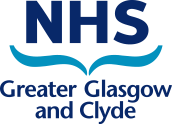13.2. Emollient and barrier preparations
The MHRA published a Drug Safety Update in December 2018 about the fire risk and risk of burns associated with emollients and issued advice for health professionals. The advice can be accessed by clicking here (external link).
13.2.1. Emollient Creams
13.2.2. Emollient Ointments
Restrictions:
Restricted to use only in patients who require a paraffin-free product.
Prescribing Notes:
Epimax should not be used as a soap substitute. Epimax should not be used on the face nor near the eyes; please see MHRA drug safety update (July 2024) for further details.
13.2.3. Emollient Gels
13.2.4. Emollient Lotions
13.2.5. Other Emollients
13.2.6. Bath and Shower Emollients
In most cases, regular emollient preparations are suitable for use as bath additives and soap substitutes. The specific bath and shower preparations listed in the Total Formulary should only be reserved for situations where the use of regular emollient preparations are not suitable.
Please follow the manufacturers' instructions for the safe application and use of their products as soap substitute.
Restrictions:
Restricted to use only when skin is infected or if infection is a frequent complication (e.g. folliculitis or secondary infection of eczema).
Prescribing Notes:
Not for prolonged use unless clinically indicated.
Restrictions:
Restricted to use in patients when their regular emollient preparation is not suitable to be used as a soap substitute for the patient.
As per Scottish Government guidance, is of limited clinical value. Please consider deprescribing where safe and appropriate. Continued prescribing should be subject to regular review.
Prescribing Notes:
Please consider Hydromol bath and shower 1st line choice for dermatology conditions.
Restrictions:
Restricted to use in patients when their regular emollient preparation is not suitable to be used as a soap substitute for the patient.
As per Scottish Government guidance, is of limited clinical value as a bath/shower emollient. Please consider deprescribing where safe and appropriate. Continued prescribing should be subject to regular review.



